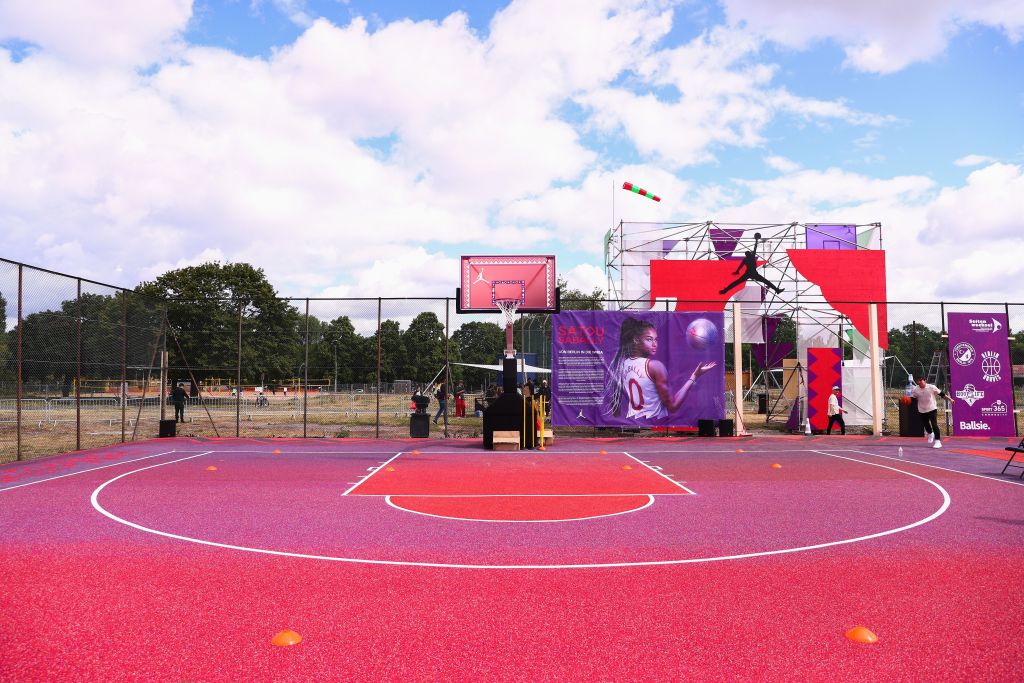Before basketball became a global spectacle, the game belonged to the streets. With a low barrier to entry — all you need is a ball — anyone can play, and some of the greatest in history honed their craft on blacktops long before they ever set foot on an NBA court, like Kareem Abdul-Jabbar at Harlem’s Rucker Park and Stephon Marbury at Brooklyn’s Surfside Gardens, to name just a couple.
These local courts aren’t just training grounds — they’re battlegrounds. In Venice Beach, few rivalries have been as heated as the VBL final on August 13, 2017, when team SunBlock’s undefeated season was cut short by Los Fearless in a game fueled by trash talk, flying elbows and a jostling crowd who roared with every bucket. Over time, the no-look dimes, ankle-breaking crossovers and chain-net swishes on these playgrounds became woven into the fabric of their neighborhoods.
By the mid-2010s, streetball wasn’t just being played — it was being performed for global audiences, thanks to social media. For example, Jelly Fam, a basketball brotherhood founded in 2012 by Isaiah Washington and Ja’Quaye James, was born on New York playgrounds and blew up on Instagram and YouTube. Their signature “jelly” layup — a finger roll with extra hang-time, arc and flair — went viral in the 2010s, just like AND1 made the crossover iconic in the 2000s.
Now, with TikTok, anyone can become a global sensation. A slam in Lagos can ride the algorithm and swiftly earn the number of eyes that someone like Victor Wembanyama commands on any given game day. A Kobe Bryant–style fadeaway posted by a 13-year-old in Manila in the morning can go viral by nightfall. Wherever you are, whoever you are, you can be a star — even for a moment.
Here, PLAYERS takes you on a historical and global tour of the world’s most iconic streetball courts — each rich in story, beauty and spirit — where legends were made and new ones are being born.
Rucker Park, Harlem, New York
An asphalt star factory where Abdul-Jabbar, Wilt Chamberlain and Julius Erving first made their mark before the NBA, this playground in Harlem became a proving ground for New York City’s elite players. It sparked streetball leagues nationwide and led to the AND1 Mixtape Tour — a traveling showcase that took playground flair to the masses. As the New York saying goes: If you can make it here, you can make it anywhere.
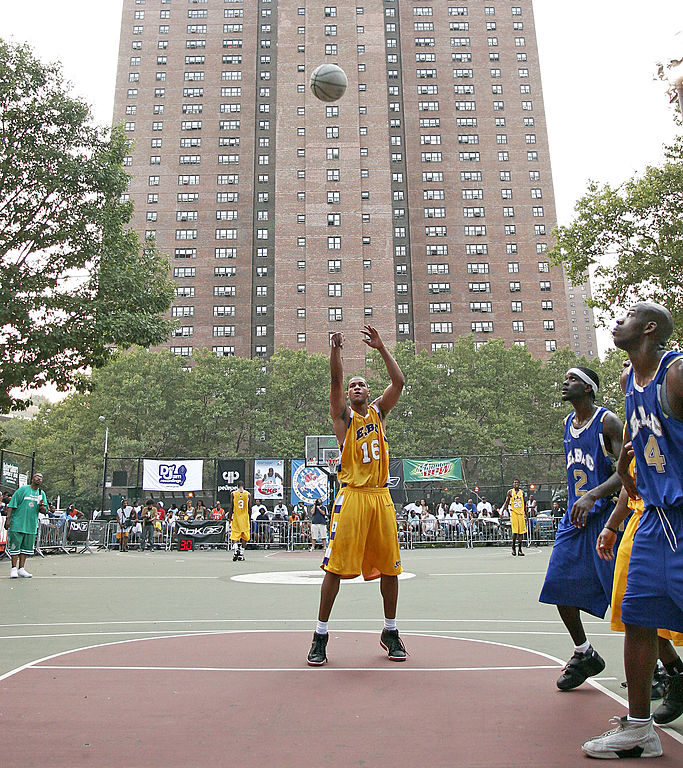
Venice Beach Basketball Courts, Venice Beach, California
Just west of Hollywood, Venice Beach has its own spotlight — where game, not fame, gets you noticed. It’s where Sidney Deane (Wesley Snipes) hustled Billy Hoyle (Woody Harrelson) in White Men Can’t Jump. Billy, known for his shooting, not his hops, caught an alley-oop from Sidney and threw down a dunk to win the final game, putting a spin on the movie title’s diss. But in real life, the annual Venice Basketball League (VBL) has delivered some of streetball’s wildest moments, from a ringer-fueled 2017 title clash featuring Montrezl Harrell to 4-foot-5 internet star Mani Love squaring off against 5-foot-9 NBA guard Isaiah Thomas (not to be confused with Isiah Thomas from the ’80s) for $500.
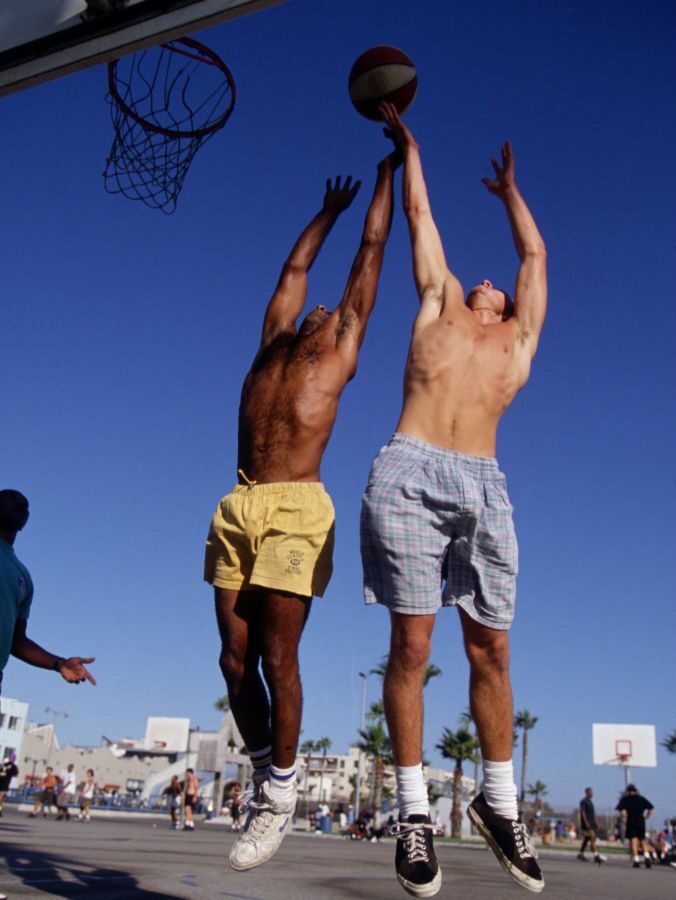
Taguig Tenement Court, Taguig, Manila, Philippines
In 1910, American colonialist educators introduced basketball to the Philippines as a women’s sport for good health and motherhood. Today, it’s a national obsession — kids wear Filipino-American Jordan Clarkson’s Gilas jersey and mimic Bryant’s fadeaway on cracked courts beside rice fields or in fishing villages. The country’s devotion to the game rivals Brazil’s love for soccer. At Taguig Tenement Court — a communal court tucked inside a seven-story housing “vertical slum” complex — basketballs start bouncing with the sunrise roosters. Throughout the complex, murals have honored Kobe and Gianna Bryant, Luka Dončić, LeBron James, Michael Jordan and Manny Pacquiao. NBA stars like Clarkson, James and Paul George have made personal appearances, with James’s 2015 visit drawing thousands into the Tenement’s courtyard and balconies.
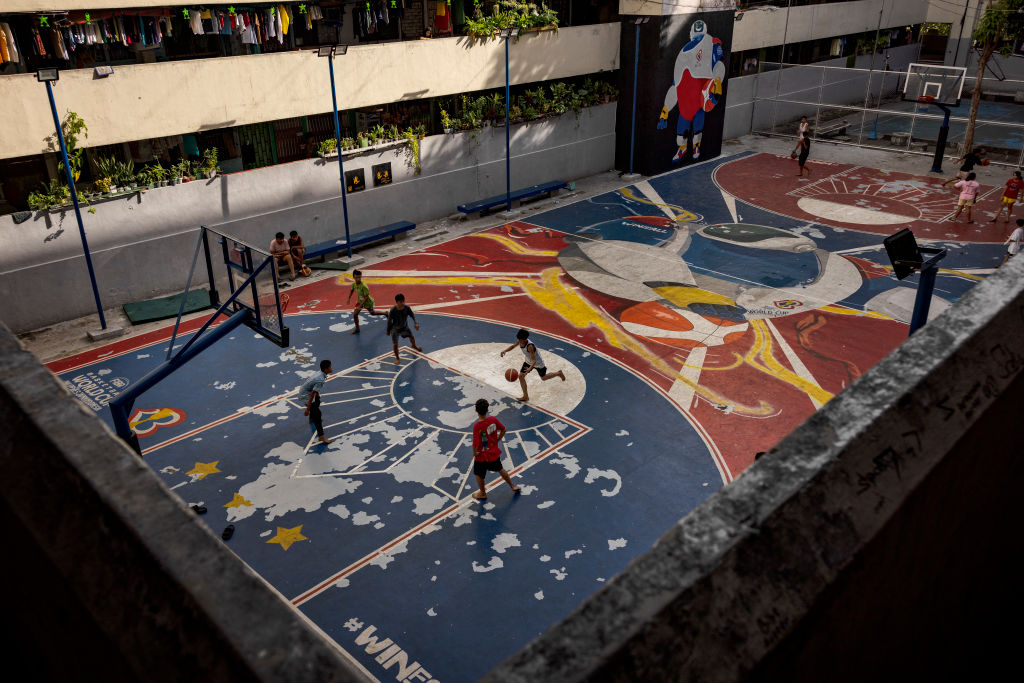
Pigalle Duperré, Paris, France
The basketball court in Pigalle helped spark the neighborhood’s creative gentrification. Designed by Pigalle (the streetwear brand) founder Stéphane Ashpool and Ill-Studio, this former parking lot has seen five bold redesigns since 2009, becoming a global design icon and frequent Instagram backdrop. It has also hosted the annual Pigalle 3×3 Tournament, Nike and Converse activations and a 2018 visit from James. Once overshadowed by Montmartre and tourist favorite Moulin Rouge, “SoPi,” as it’s called now, short for South Pigalle, has grown over the years to become its own tourist hotspot, with high-end boutiques, cafés, natural wine bars and even a Soho House.
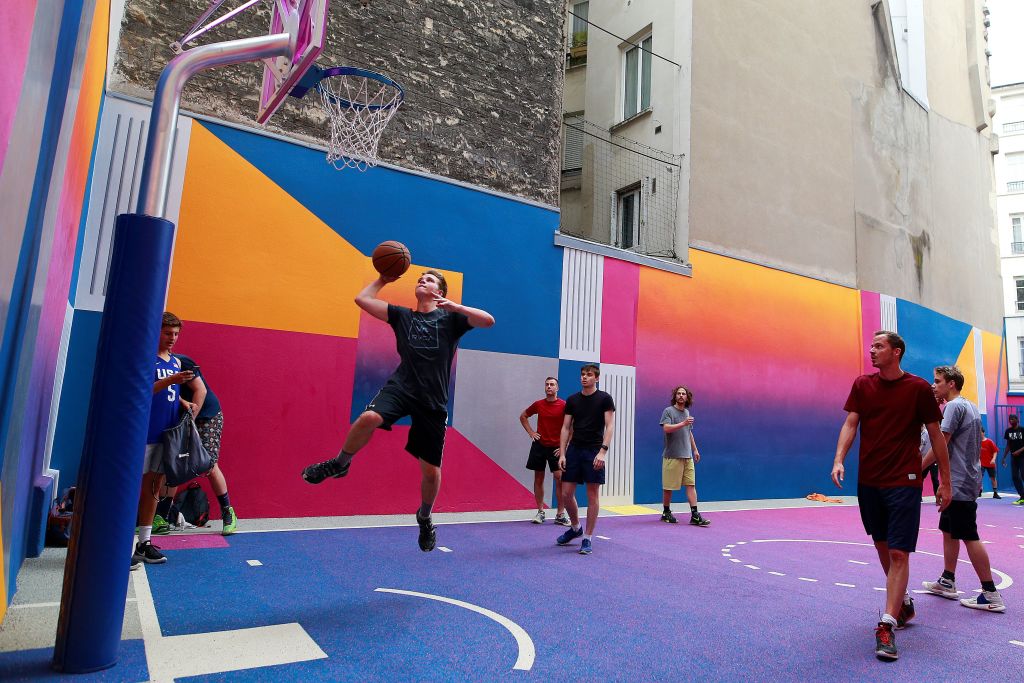
Choi Hung Estate Court, Hong Kong
Hong Kong is a densely populated city; space is scarce and rent is skyhigh. Because of this, there’s a persistent housing shortage, which makes Ngau Chi Wan’s Choi Hung Estate Court — a colorful basketball court in the middle of a public housing complex — a remarkable anomaly. Although it lacks the marquee match-ups that courts like Rucker Park see, it makes up for it with a photogenic backdrop of pastel-colored buildings straight out of an Andreas Gursky photograph. Brands like Nike and Adidas have used the premises to make content, turning it into one of the most Instagrammed courts in the world. But to residents, it’s the soul of the complex, where they gather for festivals and events.
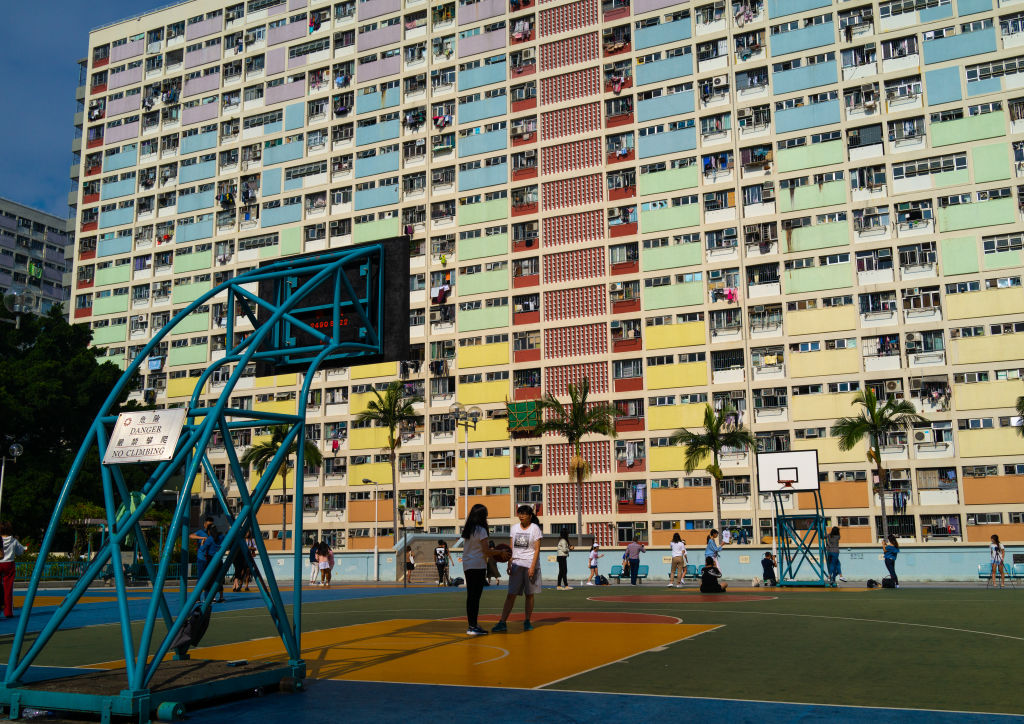
Dubrovnik City Wall Rooftop, Dubrovnik, Croatia
Perched atop Dubrovnik’s centuries-old city walls, this basketball court is within a UNESCO World Heritage Site, surrounded by medieval buildings and terracotta rooftops. Named one of the best-designed courts in the world by Architectural Digest, it can offer a surreal scene when a game is unfolding above ancient fortifications with sweeping views of the Adriatic Sea. No storied streetball rivalries here, just pure unrivaled beauty.
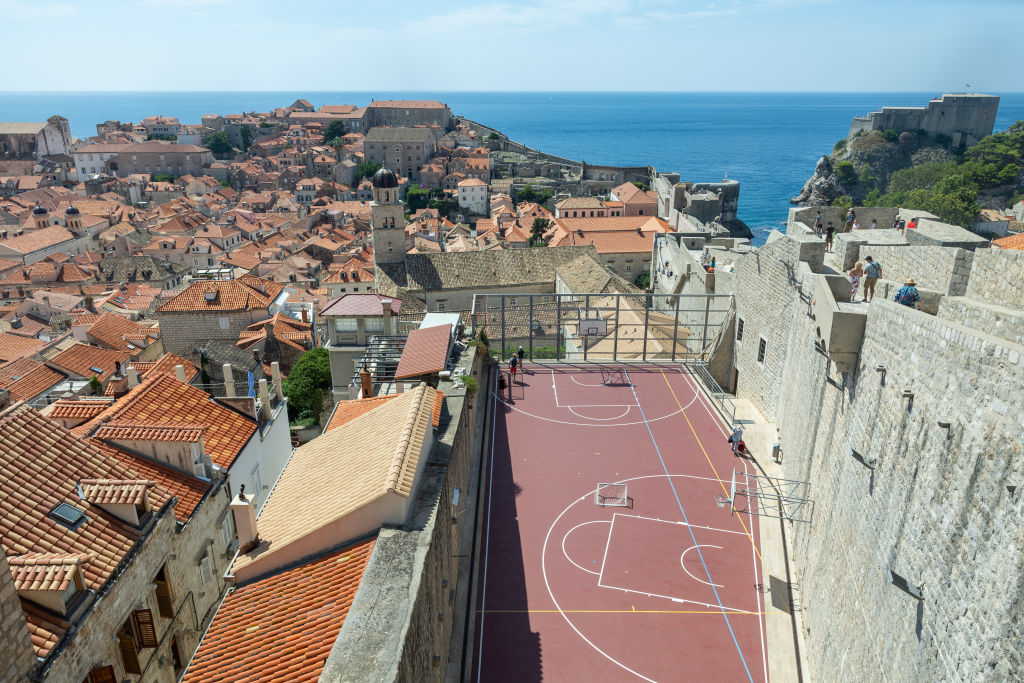
The Floating Basketball Court, Tonlé Sap, Cambodia
On Tonlé Sap Lake, where water levels shift dramatically between rainy and dry seasons, a floating basketball court stands as a quiet feat of engineering. Enclosed by a wire fence to keep balls — and players — from falling into the water, it’s built on a platform that rises and falls with the tide, just like the homes, schools and markets of the surrounding community. Though this is one of the poorest corners of the world, Cambodia’s resilience runs deep, shaped in part by surviving the horrors of the Khmer Rouge regime in the 1970s. The court reflects not just resourcefulness, but a growing love for the game. With the NBA’s global reach expanding since the 1990s, basketball has taken root here and is growing in popularity.
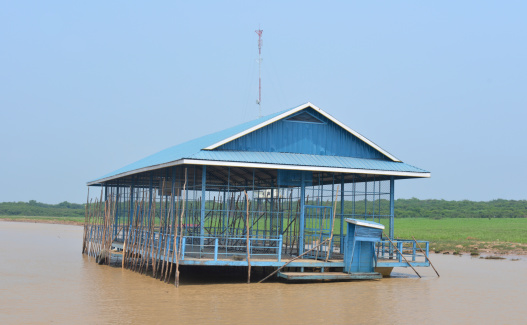
Angels Gate Park, San Pedro, Los Angeles, California
It’s Los Angeles, so star power comes with the territory. Angels Gate Basketball Court, perched on a cliff with sweeping views of the Pacific, looks like it was made for the movies — and content. The Brutalist, curvilinear basketball posts are striking, too. No surprise, then, that the court made a cameo in Spike Lee’s He Got Game (1998), a now-seminal basketball film starring Denzel Washington that examines the choices facing young Black men with hoop dreams at the edge of fame. In 2001, it was also a backdrop for a popular black-and-white photo of Bryant, a beloved local.
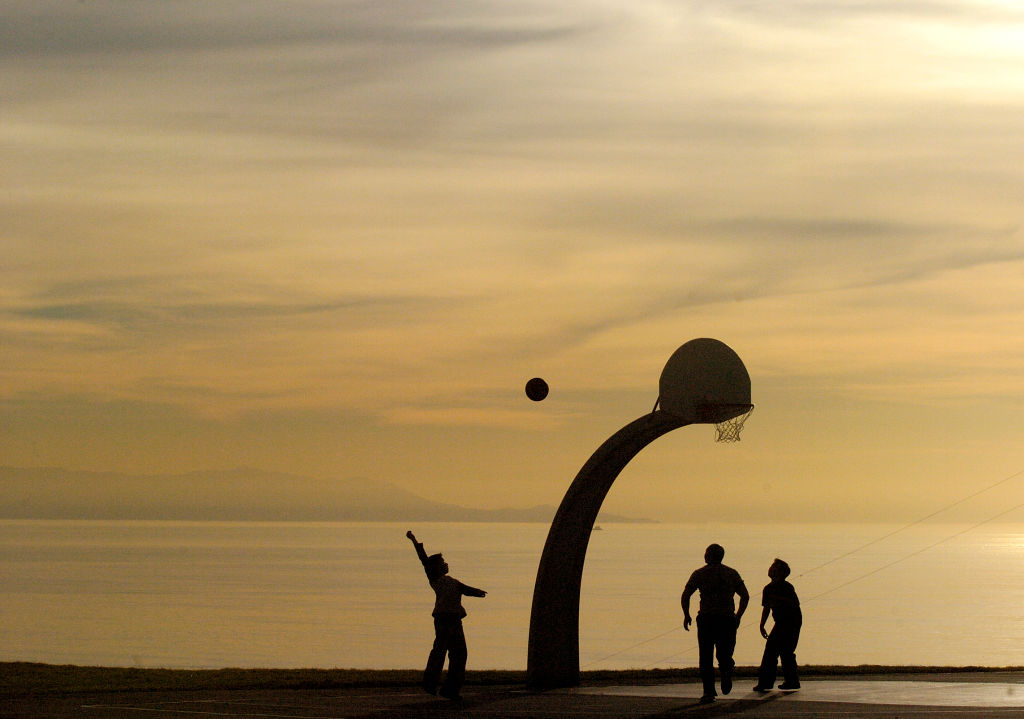
Viale Lazio Court, Milan, Italy
In Milan, the Viale Lazio Basketball Court offers a different kind of drama. This hidden gem, tucked near Porta Romana, was reimagined by Milanese artist Davide Barco for Foot Locker Europe’s “Raise the Game” initiative in 2021. Naturally, he designed it to mimic the marble geometry of the Duomo’s nave, but it’s more than just a place to ball: Foot Locker has worked with Da Move Crew, a local group that promotes social change through sports like basketball In 2022, the Jordan Brand opened a World of Flight flagship store in Milan, and ever since, the crowds have grown as a new love for the game spreads through the ancient city.
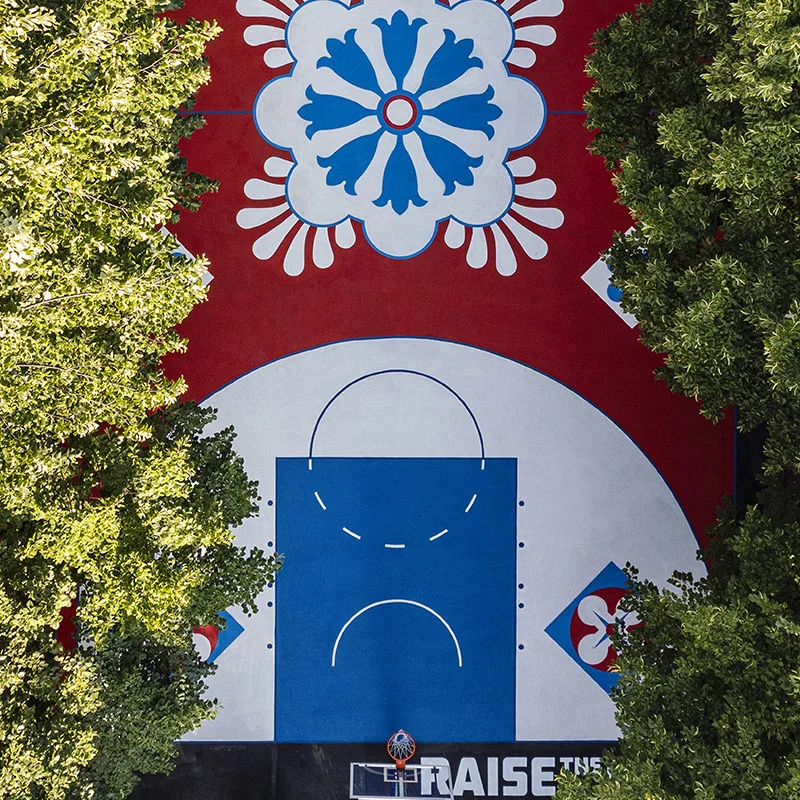
Satou Sabally Court, Tempelhofer Feld, Berlin, Germany
In a city that thrives on creative freedom and self-expression, Berlin’s Satou Sabally Court makes space for young girls from a range of immigrant backgrounds to shine and claim space. Set amidst gritty sprawl, in 2022 it was refurbished by Jordan Brand and named for WNBA star Satou Sabally. It was even decorated with vivid red and fuchsia in tribute to her Gambian-German roots. The court is one of many Berlin youth initiatives used to encourage inclusive basketball participation, like TuS Lichterfelde Basketball e.V., a program that brought up Sabally.
